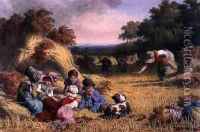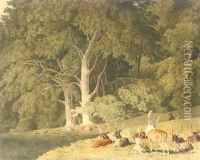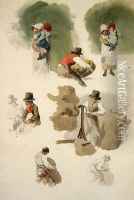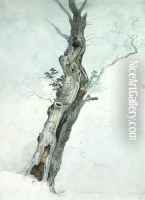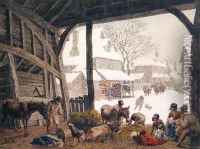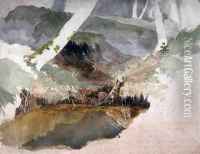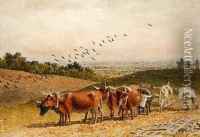Robert Hills Paintings
Robert Hills was an English painter and etcher known for his work in watercolors, particularly his depictions of animals and rural scenes. Born on June 26, 1769, in Islington, London, he developed an early interest in art and became particularly skilled in the portrayal of animals, a genre that was growing in popularity during his lifetime.
Hills initially studied under the landscape painter John Alexander Gresse, who recognized his pupil's talent for drawing animals. His early work consisted largely of etchings, and he became associated with the Society of Painters in Water Colours, which later became the Royal Watercolour Society. He was one of the founding members of the society in 1804 and exhibited many of his works there throughout his career.
His style is characterized by its delicate yet precise depiction of the subject matter, capturing the essence of the English countryside and its wildlife. Hills’ watercolors often reflect a serene pastoral mood and show a keen observation of light, shade, and atmosphere. He focused on a variety of subjects, including domestic livestock, deer, and other wildlife, and his drawings of dogs, in particular, were highly regarded.
Despite his success, Hills was known to live a life of modest means and was described by contemporaries as being somewhat reclusive. He never married and spent much of his life in London, where he was an active member of the artistic community, contributing to the development of British watercolor painting.
Hills continued to paint and exhibit his work until his death on April 14, 1844. His legacy includes a significant body of work that has contributed to the recognition of animal painting as a serious and respected art form in Britain. Today, his works are held in various collections, including the British Museum and the Victoria and Albert Museum, and they continue to be appreciated for their charm and technical excellence.

